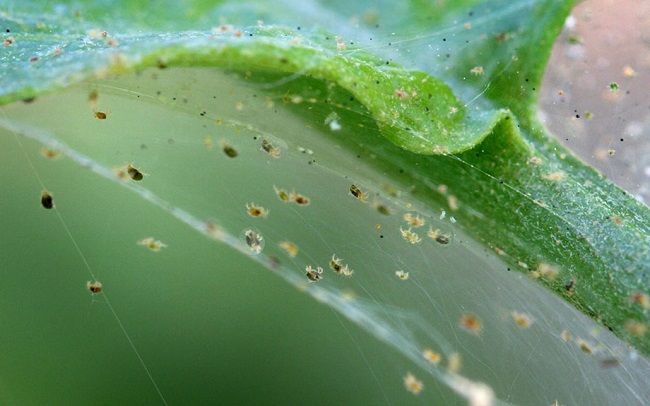
Most spider mites, especially the two-spot spider mite love hot weather and dry conditions, so the race is on! Batten down the hatches and Katie bar the door, it’s spider mite season! Spider mites attack a variety of plants in your landscape including burning bush, dwarf Alberta spruce, boxwood, almost all spruce varieties and other plants.
But they are tiny! Tiny, destructive creatures that easily move around in your plants undetected because they are so small you don’t notice them. They are only 1/50th of an inch long in their adult stage. That’s small! Plus, they often hang out on the underside of the foliage feeding away like thieves in the night.
So how can you tell if you have them? Look for tiny yellow spots on the leaves and needles of your plants. Spider mites have tiny mouths that are designed to suck the juice out of individual plant cells. So, they attack your plants one cell at a time and the damage really doesn’t start to show up until they have destroyed most cells on a leaf or an area of the plant.
If you hold a piece of white paper under a branch that concerns you, then sharply wrap the branch with a pencil you might knock some of them off onto to the paper where you can see them. But you really must look closely because they look like walking dust particles.
Since they like it hot and dry you can blast them off your plants with a sharp stream of water from the garden hose. Or you can spray your plants with an insecticidal soap that will get rid of the mites but not harm your plants.
Spider mites can completely defoliate a large burning bush, but fortunately the plant is usually not permanently damaged. They also do a lot of damage to dwarf Alberta spruce, and the damage there is more permanent.
Keep an eye out for them and give them a good hosing down!
Mike McGroarty is the owner of McGroarty Enterprises and the author of several books. You can visit his website at FreePlants.com and read his blog at MikeBackYardNursery.com.
Related Articles & Free Email Newsletter
A Natural Insecticide to Use Against Plant-Eating Insects
How to Identify & Control the Tomato Russet Mite




Comment here